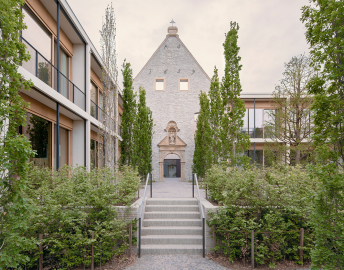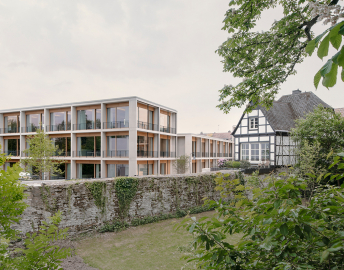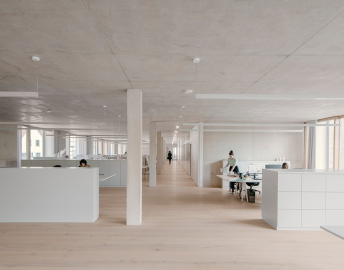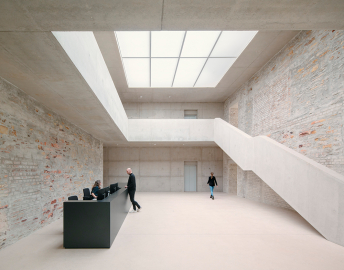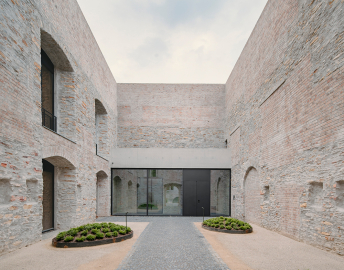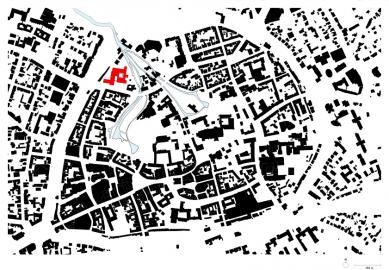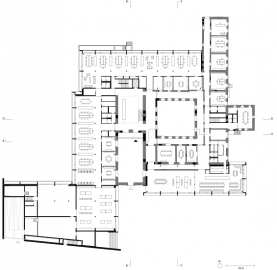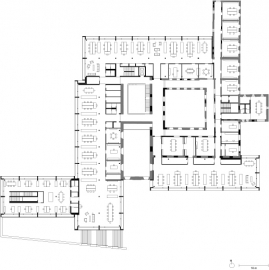Jacoby Studios
The Jacoby studios convert an existing building complex into a new headquarters for a family-run company. Originally a seventeenth century Capuchin monastery, the structure had been used as a hospital for over 150 years. The conversion reveals the historic building fabric once again and completes the structure with new extension wings.
The complex of historic buildings, situated in the medieval town centre of Paderborn, was severely damaged during the Second World War and subsequently underwent several changes and extensions. Converting it into Jacoby Studios involved the removal of these post-war additions. The historic building fabric, in particular the chapel façade, the cloister, the east building wing and the seventeenth-century cellar were preserved and restored, creating a picturesque ruin structure made of quarry-stone masonry with the former cloister at its heart. New two- and three-storey extension wings were arranged in accordance with the orthogonal structure of the original buildings. Through the historic entrance gate and the former chapel, visitors enter the foyer, from where the office spaces, conference rooms, showroom and a canteen can be accessed.
The Jacoby studios are situated next to the western tributary of the Pader Springs at the edge of Paderborn’s old town, today a spacious public park that is traversed by numerous tributaries. Its grounds are bordered by awellreserved historic wall. Through the conversion, the ensemble echoes its history, appearing once again in the cityscape as a well-balanced composition of different volumes standing out from the surrounding perimeter block buildings. Despite the enduring medieval town layout, the surrounding buildings are largely characterised by simple rendered façades, mainly from the second half of the 20th Century. While the new complex has its own sense of identity, the extensive preservation of the outer masonry expresses a high degree of historical continuity within this urban landscape.
The historical building elements of the former monastery complex were initially identified through an archaeological investigation of the building fabric. These elements served as the starting point for the architectural concept for a new building ensemble. As a direct result of research and regained visibility, all historic building elements were placed under monument protection in agreement with the client. The dismantling of the post-war additions revealed a ruinous structure, consisting mainly of quarry stone masonry. While the chapel façade was preserved as the main entrance, the interior of the former chapel was transformed into an exterior space, the chapel courtyard, serving as an entrance courtyard. Remains of the former cloister are integrated into this central courtyard. The different layers of the historic building fabric made of stone and brick were exposed, repaired and, where necessary, completed. Extending this existing structure, the new building further develops the palette using exposed concrete and timber.

